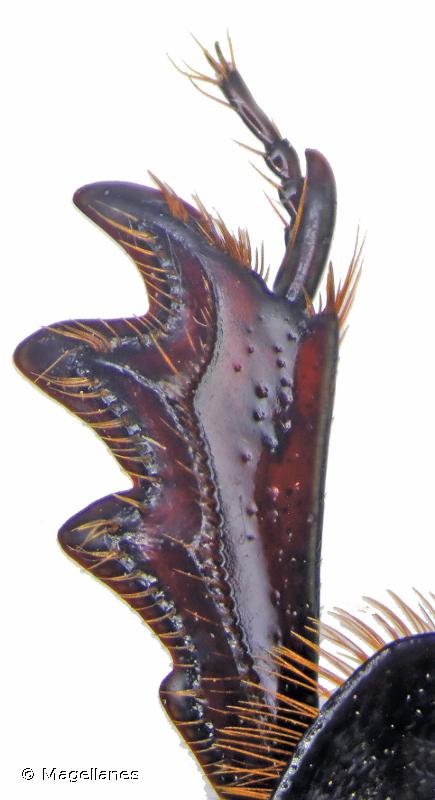
cd_nom

| Author : J. Touroult |
 |
To get the picture, please visit:
Legend: Femelle
Despite the Creative Commons license, please inform the author of the use which will be made of his photo

| Author : Magellanes |
 |
To get the picture, please visit:
Legend: Femelle
Any reuse of one or more photographs on this site is subject to an authorization request from the author.
Link to the Code of Intellectual Property (Legifrance)

| Author : Magellanes |
 |
To get the picture, please visit:
Legend: Mâle
Any reuse of one or more photographs on this site is subject to an authorization request from the author.
Link to the Code of Intellectual Property (Legifrance)

| Author : Magellanes |
 |
To get the picture, please visit:
Legend: Mâle
Any reuse of one or more photographs on this site is subject to an authorization request from the author.
Link to the Code of Intellectual Property (Legifrance)

| Author : Magellanes |
 |
To get the picture, please visit:
Legend: Femelle tibia ant.
Any reuse of one or more photographs on this site is subject to an authorization request from the author.
Link to the Code of Intellectual Property (Legifrance)

| Author : Magellanes |
 |
To get the picture, please visit:
Legend: Femelle
Any reuse of one or more photographs on this site is subject to an authorization request from the author.
Link to the Code of Intellectual Property (Legifrance)

| Author : J. Touroult |
 |
To get the picture, please visit:
Legend: Mâle.
Despite the Creative Commons license, please inform the author of the use which will be made of his photo

| Author : H. Bouyon |
 |
To get the picture, please visit:
Any reuse of one or more photographs on this site is subject to an authorization request from the author.
Link to the Code of Intellectual Property (Legifrance)
Taille : 15 à 20 mm
Identification :
Elytres avec 9 stries. Angles antérieurs du pronotum largement arrondis. Marge antérieure du pronotum non sinuée. Protibias quadridentés. Aspect caractéristique de la carène du pronotum du mâle.
Confusion possible : Aucune
Périodes d'observation de l'adulte :
Activité du printemps à l'automne.
Biologie-éthologie :
Coprophage de type paracopride. Activité crépusculaire et nocturne. L'espèce exploite préférentiellement les bouses de vaches et les crottins de brebis, mais aussi le crottin de cheval, les excréments humains et parfois ceux de chien.
Biogéographie :
Toute l'Europe centrale et méridionale. En Corse, Copris lunaris se rencontre majoritairement vers 1000 m d'altitude.
Références :
BARAUD (J.), 1992, Coleoptères scarabaeoidea d'Europe. Faune de France et des régions limitrophes 78 : 1-856, Société Linnéenne de Lyon.
Patrick Prévost(),2020
Continental
Metropolitan France
Overseas
Marine
Metropolitan France
Overseas
The map presents a summary at the 10 x 10 km grid of the observation data for the species transmitted to the SINP. These data have been subjected to validation filters.
The map presents a reference distribution layer of the species at the scale of departments and marine sectors. The presence and absence data were established by expertise within a network of partners. This reference distribution is used in the validation process of the SINP data at the INPN level.
Corresponds to a report on the basis of at least one observation proved within a period of 10 years (20 years for little-known invertebrates) preceding the year and no presumption of extinction since obtaining the last data nor doubt on reproductive and implemented nature of this population. For migratory species, the presence indicated concerns areas of reproduction.
This status is based on one or more of the following criteria:
This point covers the absence, more difficult by nature to demonstrate than presence. This status is based on one or more of the following criteria:
This status must be assigned to a department in which the presence of the species is casual.
Particular case of absence due to a proven extinction less than a half century ago (older disappearances are treated as "no probable or definite").
In the state of knowledge, we can not comment on the presence or absence in the current department. This is the default status when not comprised in one of the previous categories or whenever there is doubt.
The map shows the global distribution of the species based on GBIF data (Global Biodiversity Information Facility).
